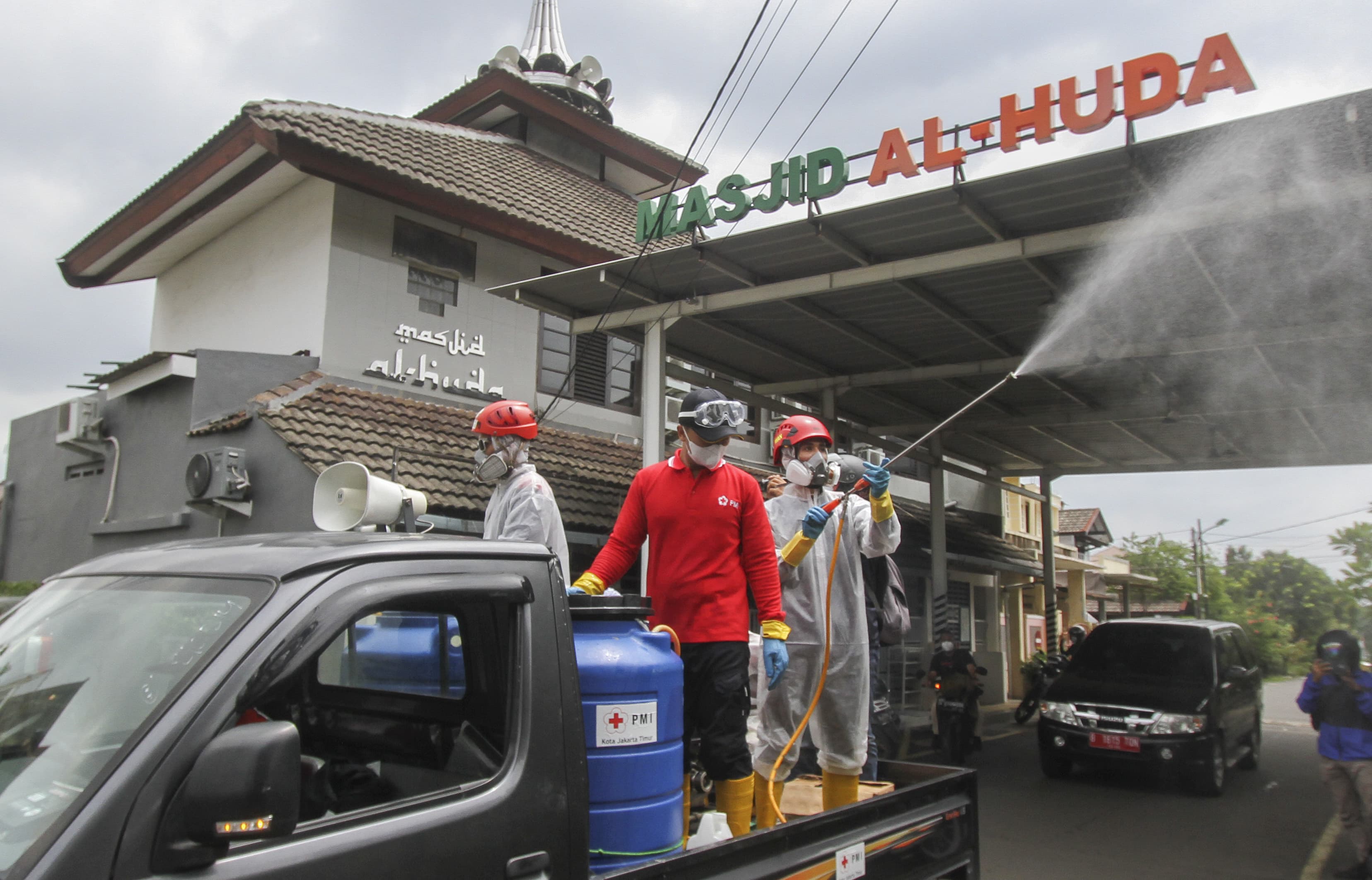Indonesia relies heavily on China’s Sinovac vaccine. A new wave of infections puts it to the test

Indonesian Red Cross officers spray disinfectant at the Pondok Bambu residential area in Jakarta, Indonesia on February 10, 2022. This action as an effort to suppress the omicron variant of the coronavirus.
Eko Siswono Toyudho | Anadolu Agency | Getty Images
Indonesia is going through a new wave of Covid infections, with daily cases hitting record highs last week.
The Southeast Asian country has relied heavily on inactivated virus vaccines produced by China, which studies previously showed were less effective than mRNA shots.
Messenger RNA, or mRNA, vaccines use genetic material to trigger the infection-fighting process in the body, while traditional vaccines use a dead or weakened virus to produce an immune response.
On Wednesday, Indonesia hit a daily record high of more than 64,000 cases — superseding daily infections in the previous wave, which peaked just under 57,000 in July 2021.
The country has reported 5.2 million cases of Covid-19 to date and at least 146,000 deaths since the start of the pandemic, according to the health ministry. It has the highest number of cases among Southeast Asian countries, Johns Hopkins data showed.
The latest surge in Indonesia’s Covid cases has put China-made vaccines to the test.
Two medical doctors who spoke to CNBC argued that China-produced vaccines — such as the one developed by Sinovac Biotech which Indonesia has relied on most heavily — are still able to prevent severe illness and death.
If you received two doses or three doses of Sinovac or Sinopharm, those vaccines frankly are doing their job.
Vin Gupta
assistant professor, Institute for Health Metrics and Evaluation
“That’s actually, I mean, the first and the main benefit of any kind of vaccine in the world,” said Dr. Dicky Budiman, a global health security researcher at Griffith University in Australia.
Being less effective is not the same as being ineffective, he told CNBC.
“If you received two doses or three doses of Sinovac or Sinopharm, those vaccines frankly are doing their job,” said Vin Gupta, an affiliate assistant professor at the Institute for Health Metrics and Evaluation, an independent global health research center at the University of Washington.
The shots don’t prevent infection, but are keeping people out of hospitals — “exactly what they should be doing,” he told CNBC’s “Street Signs Asia” last month, adding that the world has had wrong expectations of Covid vaccines.
Omicron threat
As omicron spread in December, researchers from the University of Hong Kong found that the Pfizer–BioNTech vaccine, which uses the new mRNA technology, fared slightly better than Sinovac shots against the variant, but noted that both did not provide enough protection.
In that sense, all countries remain vulnerable to high case numbers, said Dr. Edhie Rahmat, who is executive director of Project HOPE Indonesia. Project HOPE, short for Health Opportunities for People Everywhere, is a global health and humanitarian relief organization.
He pointed out that the U.S. has administered mostly mRNA vaccines, which are seen to be more effective — but it’s still vulnerable to omicron. Cases surged in the U.S. in January as the variant swept through the country. Deaths spiked but remained lower than in previous waves.
Many developing countries around the world relied on Chinese-made Covid vaccines which are easier to transport and store compared to those developed by Pfizer or Moderna, which must be kept at subfreezing temperatures.
Budiman from Griffith University said countries should use any available vaccine that has been approved by the World Health Organization.
“If we wait [for] the messenger RNA, many people … will die during the delta wave,” he said.
He also said he hopes the world won’t see vaccines as “Chinese” or “Western,” but rather as “available tools” that we have and can use now.
Virus situation
Covid cases in Indonesia started rising rapidly in January and continue to climb. The WHO said in a Feb. 15 epidemiological report that infections in the country increased 68% from the week before.
Rahmat of Project HOPE said the increase in cases has come mainly from cities with high population density such as Bandung, Yogyakarta and the capital of Jakarta. However, the virus could spread further in suburban areas soon, he said.
Bed occupancy rates in hospitals are also rising. “This is a worrying situation. If the cases increase sharply in the coming weeks, there will be many people who need hospitalization, and the hospital surge capacity could be reached very soon,” he warned.
The good news, Rahmat said, is that Indonesians are more aware of tracing and testing now, and are taking initiative to get tested when they’re in close contact with confirmed cases.
The country is also better positioned now, given that vaccination rates have risen, he added.
Additionally, both doctors said people who recovered from an earlier strain of the virus may have some immunity, though they cautioned that the level of protection would wane within months.
However, Budiman said public health measures are not strong enough. He said that the testing capacity is not high enough, which means official figures on case numbers likely do not represent the full picture.
Some 50.64% of the population is fully vaccinated, according to Our World in Data. By comparison, neighboring Malaysia has fully vaccinated 78.54% of its population, while that figure is 56% in the Philippines.
Authorities in Indonesia rolled out boosters for the general public in January.




